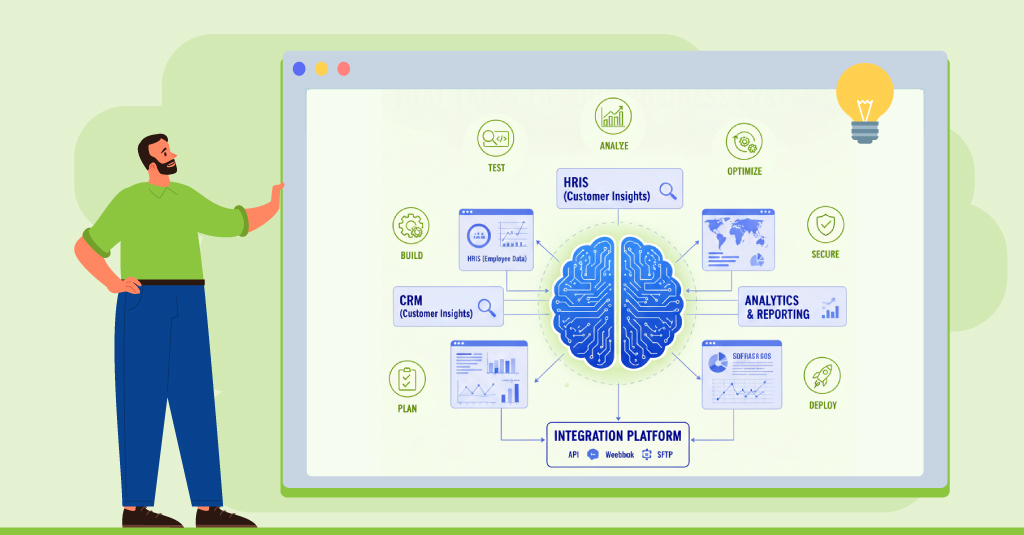So, we’ve got two definitions of microlearning: performance support and spaced learning. Each has its place. So just when do they make sense? That’s worth exploring, but to do so, we need to look a wee bit at how we actually work and learn.
There are gaps in our cognitive architecture. Despite how powerful it is (for instance, to have enabled me to write this and to arrange for you to get it, separated by time and, likely, space), any implementation of smarts will have tradeoffs. Computers, for example, can perform rote routines flawlessly, and deal with large and arbitrary amounts of information. We are pretty much the opposite. Coupling us with technology solutions, then, makes a lot of sense.
There are other gaps in our cognitive architecture. We make mistakes; there’s some randomness that’s been beneficial from an evolutionary point of view but is problematic from a performance perspective. We also have trouble remembering the exact details of something we perform several times a day and confuse them.
To go further, cognitive science recognizes that cognition is ‘distributed’, that is, it’s not all in our heads. For instance, we use spreadsheets to keep track of more data than we can keep in mind, and to do calculations that would otherwise require pencil and paper. Recognizing this is an important part of finding the sweet spot for the application of microlearning.
Another important thing to know is that our working memory is limited. Moreover, learning combines things so that doing things takes up less working memory than before we learned to be more effective. Thus, we learn to be able to deal with complex situations.
All this suggests times when external support can help. Checklists can keep us from forgetting steps. Guides can lead us through steps, helping us identify the appropriate action to take. Decision trees can keep us from having to internalize steps.
As a complementary thought, learning things is hard; it takes time and effort. If we can avoid it, we should. Thus, we should use performance support when we can, and only use formal learning when we must. This, then, gives us guidance to determine when each makes sense.
When to support performance
Performance support is for situations where we don’t want individuals to have to learn! It’s where we can put information in the world, and the person can succeed. As mentioned above, it might be checklists, step-by-step guides, decision trees, lookup tables, maps, and more.
Really, this sort of microlearning makes sense in several situations. One is where the amount of information is too much or too arbitrary to be learned. For instance, an entire catalog of parts or a broad sweep of products. Similarly, if the information is changing faster than it can be relearned. Another is where folks are doing things repeatedly throughout the day. As it gets later in the day, they are likely to think they’ve taken a step in a later part of the day when they haven’t, because they took it earlier in the day. Atul Gawande, in his insightful book The Checklist Manifesto, makes this case very well in his development of a surgical checklist. It can also be the case where it’s used for a situation that occurs so infrequently that any effort to remember would be extinguished by time.
Realize that performance support isn’t always ‘standalone’. That is, our performance with the job aid may need to be learned. It’s ideal if not, but sometimes we need some training to be able to use a job aid effectively. In this case, the microlearning includes the job aid. In fact, it’s conceivable to use the second form of microlearning, spaced learning, when we want to develop people’s ability to use a particular form of job aid. In general, such microlearning’s are desirably self-explanatory, but it may not always be the case.
When to space learning
The (non-exclusive) alternative is when it needs to be ‘in the head’. That is, when we need folks to be able to respond without the use of job aids. That is, when folks need to perform a complex skill without support.
These situations tend to be in several different categories. For one, it’s when you need a response faster than you can look up an answer. For instance, in flight, dealing with emergencies asks pilots to respond before they even think! That takes a lot of training. Another situation is when using an aid might be seen as unresponsive, such as looking at a negotiation guide during a complex discussion. There are times your expertise is expected to be ‘on tap’.
Finally, there are situations where the conditions are variable and complex enough that no amount of information could prepare you for all the situations, and we want to tap into our amazing pattern-matching capability. Here we want to give folks models to use to reason with and practice doing so.
Spaced learning is the right way to go when you need well-developed abilities. Whether it’s automating certain behaviors, so they become automatic, or providing a rich basis for acting in the moment, spacing works with our cognitive architecture. Reactivating relevant knowledge and repeated use of the knowledge to apply to practice problems develops the ability to perform in the moment in uncertain circumstances. That’s the benefit of spaced learning.
When not to microlearn!
Just as there are times for each form of microlearning, there are times when microlearning isn’t the answer, and knowing what those are is similarly important. For instance, when you need a rapid and big skill shift, you’ll need an intensive intervention. You can supplement with some spaced learning afterward, but you’ll first have to build a sufficient foundation. Similarly, there are times when an in-person coach is better than a microlearning solution. If you need help understanding the situation and providing feedback in a highly variable context, coaching will make sense.
Microlearning isn’t a panacea. It’s really two targeted solutions to specific types of problems, though both do involve small bits of content. For marketing reasons, as much as anything else, they’ve been lumped together. However, to take advantage of the concept, a reasonable understanding is needed. It’s all too easy to choose microlearning and expend resources yet have mismatched the design and solution to the problem. If folks only have a particular solution, they’re liable to apply that to all situations, even if there’s a better solution. That’s an artifact of our architecture, too, but one that we can avoid.
Knowing what microlearning is, when it makes sense, and when it doesn’t, is your ticket to getting the best outcome from your investment. This is true beyond microlearning as well. Caveat emptor!
Microlearning serves as a welcoming solution that provides support and guidance in various contexts. Whether it’s delivering performance aids for tackling complex tasks or fostering skill development through spaced learning, microlearning offers accessible and effective approaches. It’s essential to remember that while microlearning is powerful, there are instances where intensive interventions or personalized coaching may be more appropriate. By understanding the unique needs of each situation, we can make informed decisions and ensure the best possible outcomes for our learning endeavors.
To learn more about the full potential of microlearning, download our comprehensive eBook ‘Microlearning: It’s Not What You Think It Is’. Let us know if you found it useful and if you would like a detailed chat on microlearning with me or our team of experts, reach out to elearning@upsidelearning.com.


















